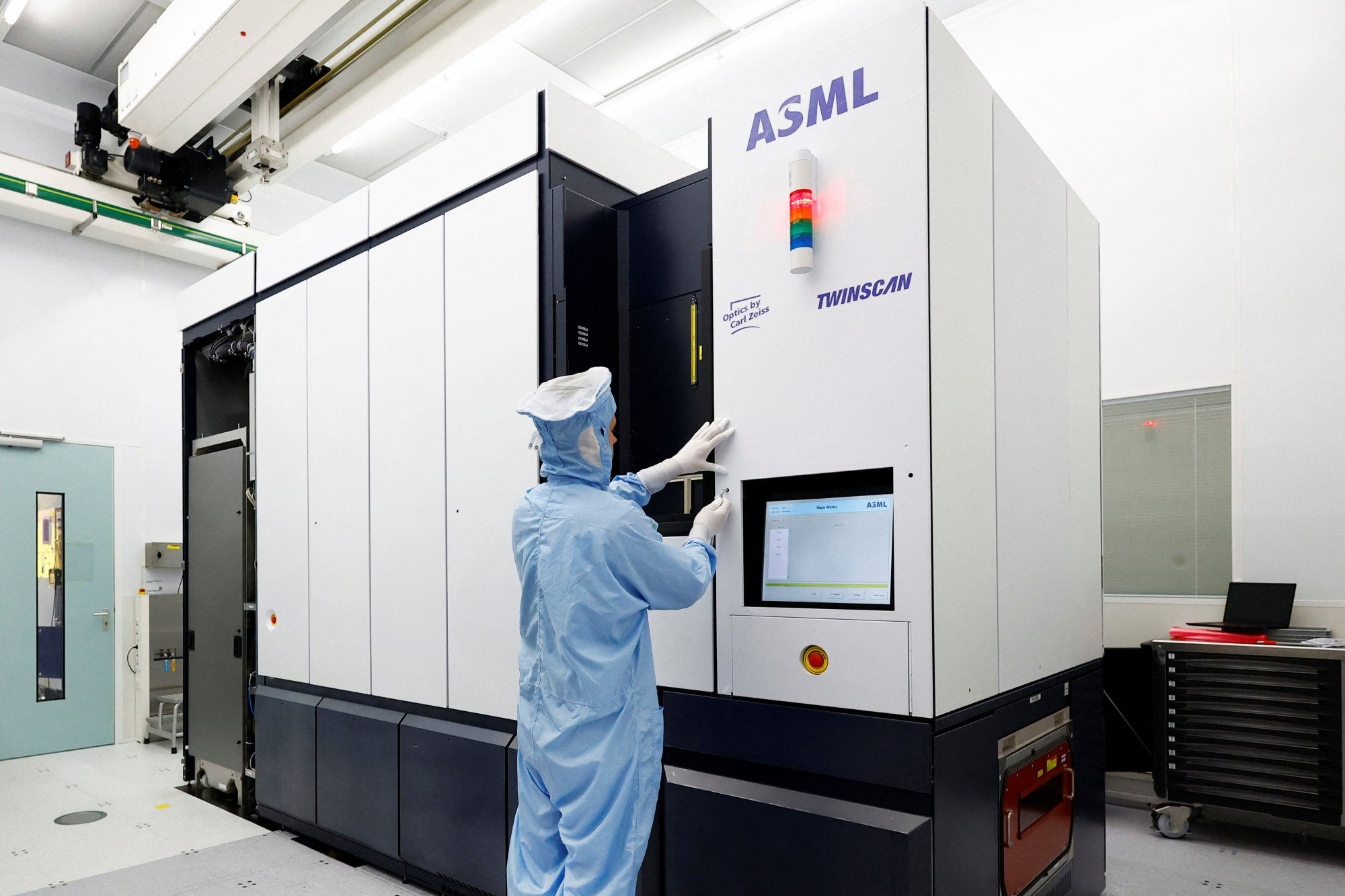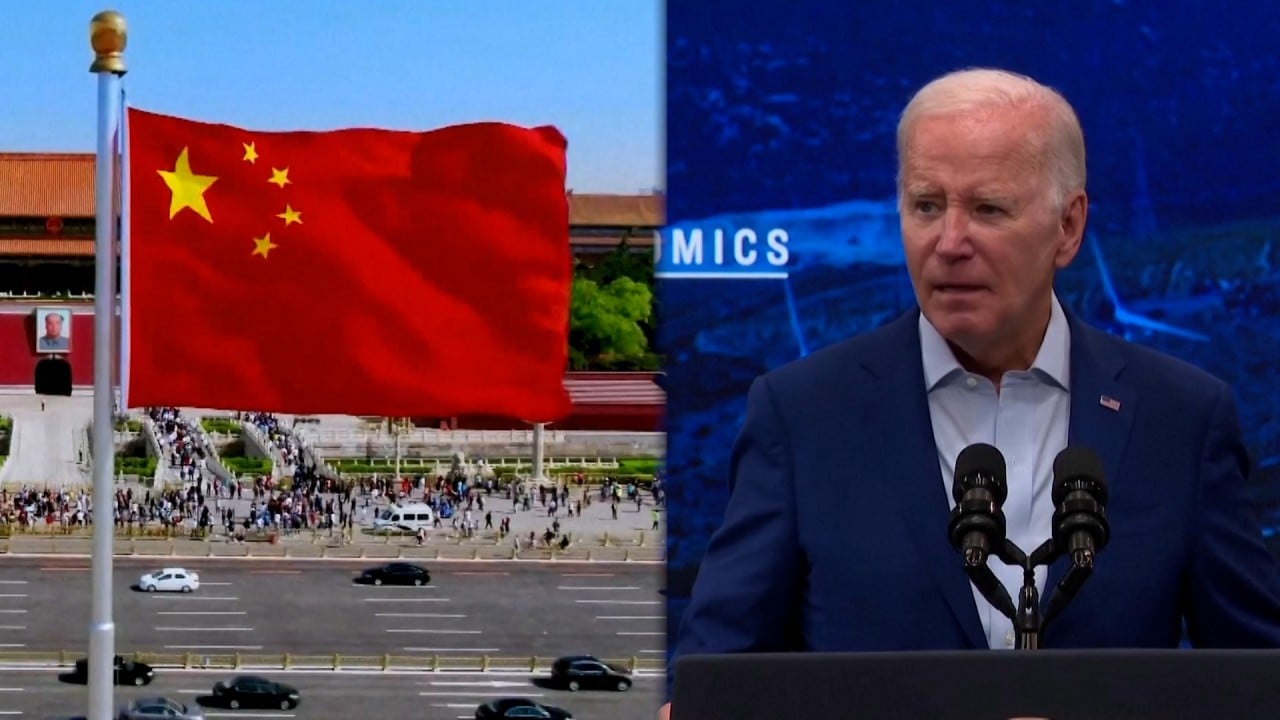Detailed data released later this month will show another huge splurge on advanced photolithography machines made by Europe’s most valuable tech company ASML, analysts predict.
Recognised as the world leader in the lithography machines that print the finest of patterns onto the most advanced and smallest microchips, ASML is one of the most important nodes in the chip supply chain. In recent years it has become the focus of a geopolitical tussle.
“The stunning surge in Chinese imports from the Netherlands over the past few months is a result of Beijing’s buying spree of Dutch chip machinery company ASML before the drawbridge gets pulled up,” said Sander Tordoir, a senior economist at the Centre for European Reform.
Rem Korteweg, a senior research fellow at the Clingendael Institute, a Dutch think tank, drew the same conclusion, saying the uptick was “almost certainly related to ASML machinery”.
“China is buying all the ASML kit they can get their hands on,” he added.
Updated US export controls could further curb ASML’s equipment exports
Updated US export controls could further curb ASML’s equipment exports
These restrictions legally took effect on September 1, with a “grace period” until January 1, 2024.
They will place ASML’s advanced immersion deep ultraviolet (DUV) lithography machines out of reach for Chinese buyers, which have already been cut off from buying the Dutch company’s higher end extreme ultraviolet (EUV) machines.
But customs data suggest that Chinese companies are using this period to fill their inventories as its chip makers face a race against time to dodge US efforts to constrain their development.
In September, Chinese imports of these machines from the Netherlands rose by 1,850 per cent to US$1.3 billion compared to a year earlier, calculations based on China’s customs data showed. In August the increase was 343 per cent, and 1,677 per cent in July, respectively.

ASML’s own corporate literature tells a similar story. In the third quarter of this year, China accounted for 46 per cent of ASML’s sales, the company’s quarterly report showed. This was up from 24 per cent in quarter two and 8 per cent in the first quarter.
“The Chinese lithography buying spree is evident in ASML’s quarterly earnings reports … each machine costs tens of millions of euros,” Tordoir said. “China scooping them up is therefore capable of driving macro-statistics like Dutch exports to China.”
Jan-Peter Kleinhans, director for technology and geopolitics at the German think tank Stiftung Neue Verantwortung, said the figures could represent a clearing of existing orders. ASML’s third quarterly briefing said a “strong backlog of around €38 billion (US$41 billion) provides us with a good basis to navigate these short-term uncertainties”.
“So equipment shipments that are popping up right now in customs statistics were purchases from several quarters ago,” said Kleinhans.
“Nonetheless, based on ASML’s own quarterly sales figures, China is outspending everybody else since several quarters, especially if you take into account that China cannot buy the much more expensive EUV equipment.”
ASML CEO’s China visit unlikely to bear immediate fruit as politics dominate
ASML CEO’s China visit unlikely to bear immediate fruit as politics dominate
It is seen by industry analysts as a way of asserting US dominance on the global chips market.
“The US is sending a clear signal to the world’s cutting-edge chip developers: don’t even bother putting time and resources into developing a high-performance computing chip for the China market. The rules will catch up,” according to a report this week from Rhodium Group, a research house.
Overall EU-China trade fell by 7.5 per cent in October compared to a year earlier. China’s exports to the bloc fell by 10.6 per cent, with imports down 1.3 per cent.


